| |
| |
With
its rolling greens, wide skies and
the familiar seashore, Southwold has
attracted and inspired creativity
for decades. Painters, craftspeople
and photographers have been among
the town’s long-standing residents
and most faithful visitors. |
|
| |
In
the 1820s, J M W Turner
sketched and painted Southwold scenes
as he explored England’s East
coast. A century later, Stanley
Spencer first visited the
town that would inspire his paintings
for over a decade.
Charles
Keene, a renowned 'Punch'
illustrator and a significant influence
on many great artists of the time,
including Whistler, Sickert, Monet
and Sisley, produced numerous pen
and ink drawings of the area.
Philip
Wilson Steer (1860 -1942)
used the Southwold Railway to make
painting expeditions to Southwold
and Walberswick, often accompanied
by his equally eminent companions,
Frederick Brown
and Walter Sickert.
At the
beginning of the 20th century, etching
became particularly popular.
H. Sylvester Stannard (1870
- 1951) and his sister Lilian
were among the best known exponents
who were also prolific topographical
painters.
Charles
Rennie Mackintosh (1868-1928)
spent a year in Walberswick at the
start of the First World War, where
he produced many of his well known
flower drawings.
|
|
| |
|
Copyright
limitations prevent our reproducing
on-line the work of many of the
eminent artists associated with
Southwold but here is a selection
from the museum's own small gallery.
|
|
|
|
|
|
|
|
|
|
|
|
|
|
|
|
|
|
|
|
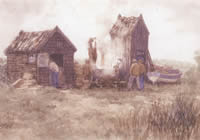 |
|
Clockwise
from top left: K. Sturgem, watercolour
portrait of Fanny Foster as a child;
Joan Macpherson, Fanny Foster's
cottage garden in Park Lane; Harry
Becker etching of horse and cart;
John Robert Keitley Duff, Dipping
the Nets; Arthur Evershed,
etching of East Cliff, Southwold.
Click the pictures to learn more. |
|
|
| |
Harry
Becker (1865 -1928)
was an inspired and stylistically
distinctive local impressionist
painter who memorably recorded many
scenes of pre-industrialised rural
life.
Contemporary
artist Damien Hirst
stayed in Southwold while an art
student, to learn from resident
sculptor Margaret Mellis.
Several notable
examples of local art hang in Southwold
Museum, among them beautiful oils
of the Southwold Railway, painted
retrospectively many years after it
had closed, by William Benner
(1884-1964). |
|
|
|
|
|
|
|
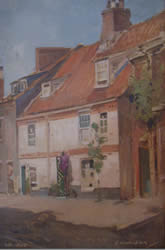 |
|
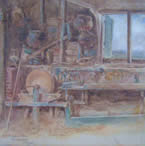 |
|
 |
|
|
|
|
|
Clockwise
from top left:
W.J. Gilbert,
Cattle, 1851;
William Benner,
Southwold
Station,
1950s; William
Fletcher Thomas,
Drawing of Sam
May,1923; C.H.
Cooke, Boat
builder's shop;
Edward Arthur
Walton, Number
9 Park Lane, Southwold,
1908. Click
the pictures for
a closer look |
|
|
|
|
|
|
|
|
|
| |
Craftspeople
have also made their mark here. From the
1890s until World War One, the School
of Industrial Art ran wood-carving classes.
They proved incredibly popular with local
fishing families and schoolchildren, who
used to sell their finished pieces to
summer visitors.
Talented Arts-and-Crafts
metalworker Philip Frederick Alexander
lived in Walberswick and received worldwide
commissions for his work during the early
part of the 1900s. |
|
|
|
|
|
|
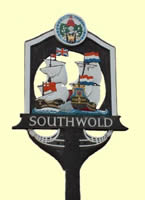 |
|
|
Local
artist, Clifford Russell, designed
Southwold's Town Sign to commemorate
the Festival of Britain in 1951.
Click the image to find out more
about him |
|
|
|
| |
THE
SOUTHWOLD SCHOOL OF INDUSTRIAL ART |
|
| |
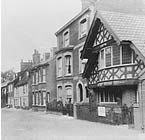 |
|
| |
Click
the picture to read more and to see
samples of its work. |
|
|
|
|
|
DIY
RIP! |
|
|
|
|
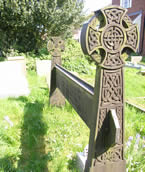 |
|
|
William Tooke
used the skills he'd learned at
the School of Industrial Art to
design and carve his own oak head
'stone' which may still be seen
in St Edmund's Churchyard.
|
|
|
|
|
|
|
|
|
|
| |
|
'THE
REST'
IS
HISTORY |
|
| |
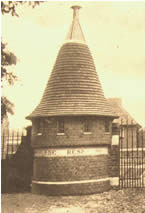 |
|
|
|
Would
you qualify to live in Mr Matthew's
quirky retirement village?
Click the picture to find out. |
|
|
|
|
|
|
|
|
|